#pokemon genus
Text
Vulpines
Vulpines are the fox-like pokemon that are related to Canines. Most vulpines have some sort of mystical power to them, causing great mystery and fear of them among people.
Like many genuses, there are some pokemon that aren't just in this genus. Explained why here.
List of Vulpines
Fenniken/Braixen/Delphox
Zorua/Zoroark
Nickit/Thievul
Abra/Kadabra/Alakazam (they're also Equines and Felines)
Vulpix/Ninetales
Eevee and the Eeveelutions (they're also Canines and Felines)
Riolu/Lucario
#//made this when i realized thst literally every fox pokemon is a kitsune in some way#pkmn genuses#//so in the pokemon world vulpines would probably be viewed as more magical and mysterious#pokemon genus#rotomblr#pokemon irl#pokeblogging#pokeblog#irl pokemon#pokemon#pokeblr#rotumblr#pkmn irl#pokemon roleplay#irl pkmn#pokemon headcanons
92 notes
·
View notes
Text
kieran hyperfixation so bad he got me actually enjoying doing art (ft. pomoe pokemon oc i have idk... he's just there with a spiked bat)
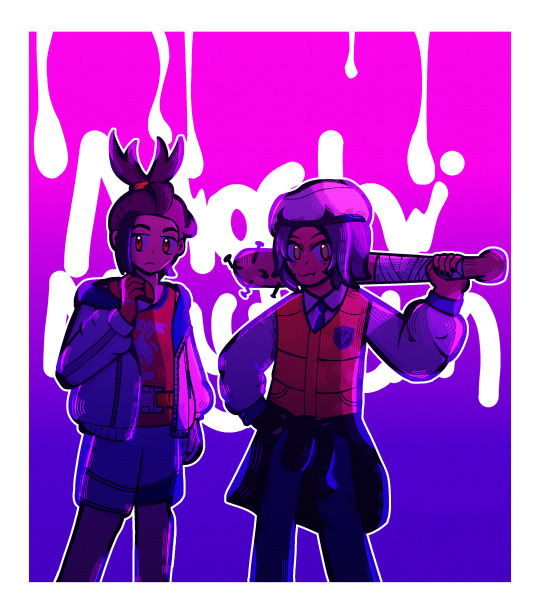
#pokemon scarlet and violet#pokemon scarvi#rival kieran#pokemon kieran#pokemon oc#totally functional apocalypse duo#kieran is an overthinker meawhile pomoe is brain empty most of the time#i need to ramble about pomoe hold on#uhhhh idk what region they're from but they lived two years in galar before moving to paldea#oh and he was a hooligan i guess and got the spiked bat from his sisterly figure after The Incident#actually the whole story is too long so um fun pomoe fact their name comes from the genus of the morning glory#pokemon does a lot of floral naming so i did the same for pomoe#also due to the lighting it isnt visible but his bangs are eggplant colored... purple with green ends#roasted eggplant served with onions#ok i need to stop staring at my art before i suddenly get self conscious#mochi mayhem#pokemon sv#pokemon sv dlc#pokemon dlc
46 notes
·
View notes
Text
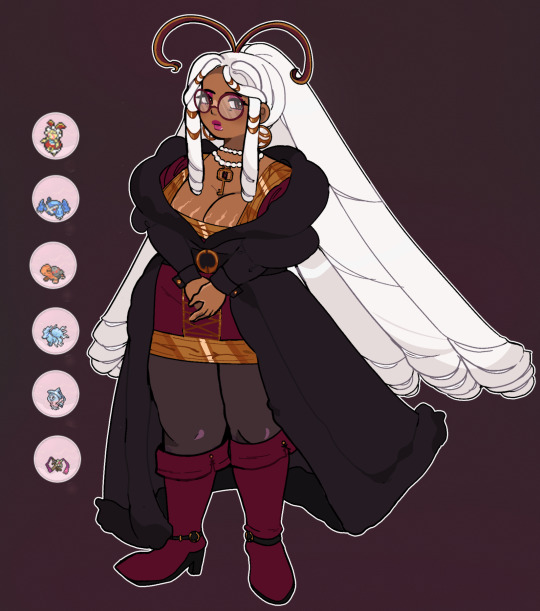
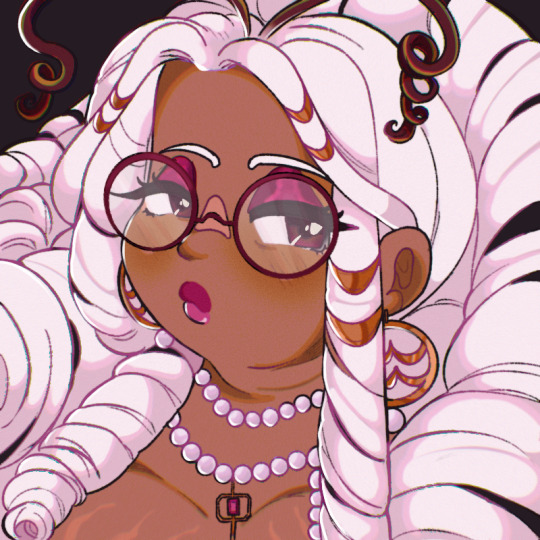
Her name is Nerine 🌹⚜️
(ignore the team, I ended up changing all but two Pokemon but I don't feel like editing it to reflect this 😭)
64 notes
·
View notes
Text
hrhrrggghhh. thoracic pelvic fins. elasmobranch heterocercal fins. ctenoid scales. The Caudal Peduncle.
#telling myself i CAN memorize the family/genus/species of 50 gulf coast fish because i've already memorized the types of hundreds of pokemon#shebbz shoutz
18 notes
·
View notes
Text
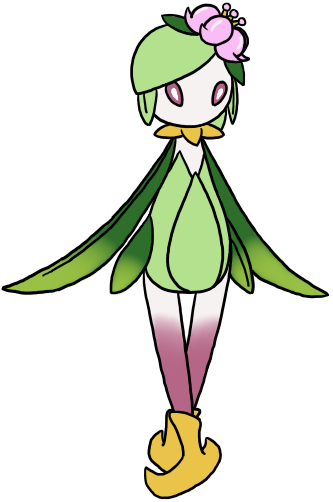
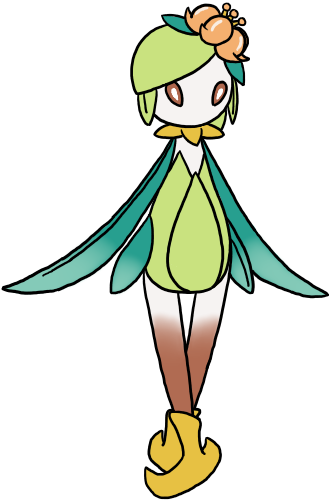
Doodledex - #549-A Hisuian Lilligant
This is probably one of the more dramatic regional forms, isn't it? I mean, look at regular Lilligant... and then look at Hisuian Lilligant again. It's pretty drastic, right? Lilligant looks like it's wearing a big, cumbersome dress... while Hisuian Lilligant went full on ballet dancer!
The dex theorizes that this is because these Lilligant lived in the mountains, and they needed to develop strong legs so they could gracefully leap around in deep snow to get around easier... but when you stop to think about it, it's weird. Hisuian Lilligant looks like it's "dressed" in less layers! How are they not freezing their leaves off? (But then again, there's no direct evidence for this: Petilil and Hisuian Lilligant aren't actually found in snowy areas in-game!)
#pokemon#doodledex#lilligant#hisuian lilligant#weirdness about its dex entry aside hisuian lilligant is a lovely design!#it also looks a lot more onion-y than normal lilligant#and bulbapedia also points this out stating that it's got some similarities to allium!#allium are actually a whole genus of flowering plants that includes onions#and according to bulbapedia they used to be grouped with the lillies... hence the design of hisuian lilligant!
27 notes
·
View notes
Text
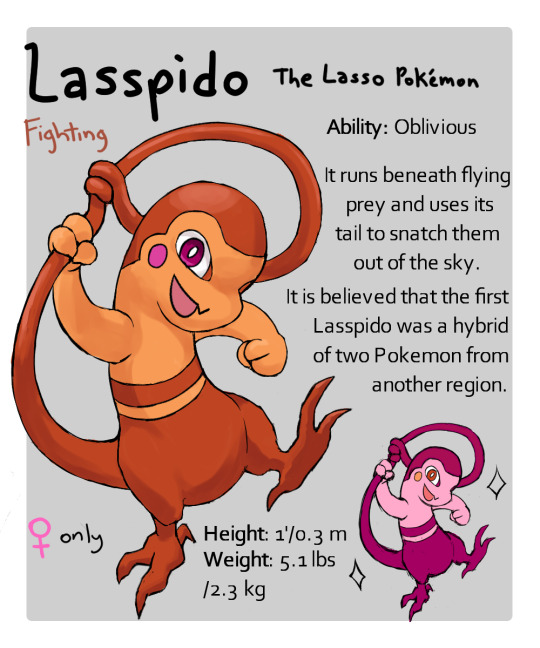
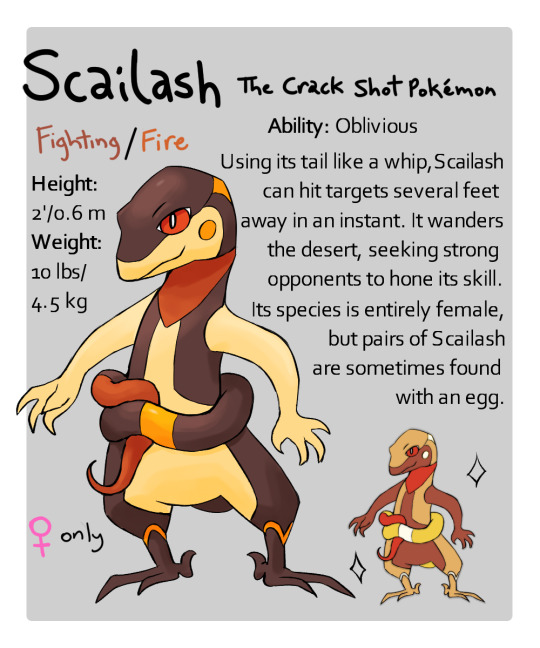
fakemon line i was working on this week :] i forgot to include evolution info but these are intended to be an early route pokemon, so Lasspido would evolve into Scailash at around level 20 or so ^_^
#fakemon#fakemon art#pokemon#the names come from the aspidoscelis genus of whiptail#lasspido = lass/lasso + (a)spido(scelis)#scailash = (aspido)scelis + tail + lash/ash#the hybridization thing is bc the main inspo for these guys (the new mexico whiptail) is a hybrid of two other whiptail species ^_^#Scailash's shiny is like that bc its placeholder name was Skelizzy and my siblings convinced me to make the shiny a hot dog for the meme#and the idea of someone catching a cool-looking shiny lasspido and leveling it up just to end up with a hot dog was really funny to me#SUPER proud of how these turned out btw. i like scailash's design better but i think i did a better job on lasspido's art
21 notes
·
View notes
Text
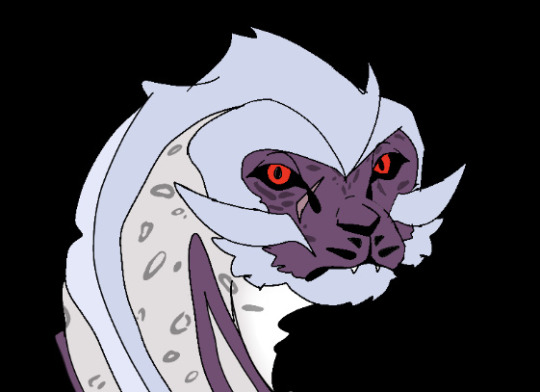
Snow leopard Palkia
#art#pokemon#fanart#pokémon#digital art#gen 4 pokemon#sinnoh#Palkia#snow leopard#Decided to make the creation quartet into the members of the Panthera genus
8 notes
·
View notes
Text
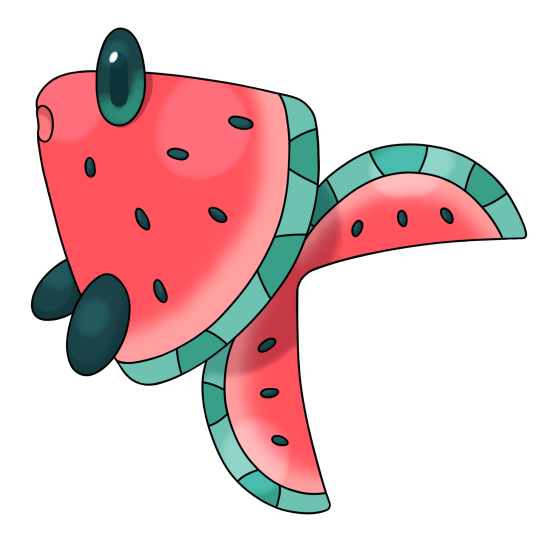
Spipepo, the seed spitter pokemon, a grass/water type
Spipepo create an excess of seeds, so they spit out the seeds as projectiles to take down bug pokemon above the water's surface. Schools of Spipepo work together so that even if many of them miss, at least one will hit the mark.
#ghost post#art#digital art#pokemon#fakemon#if bullet seed wasn't already a thing then it would be this guy's signature move#pepo another name for the genus that watermelons are in
12 notes
·
View notes
Text
i just found out about the pokemon irl/pokeblogging community. guess whos about to make a new sideblog
#pkmn irl#pokeblogging#pokémon#pokemon#rotomblr is fucking genus and also zoroark as a trans metaphor 20 out of 10#easily#gonna take a bit tho cause im gonna have to make a new oc for this
8 notes
·
View notes
Text
I have determined a name for the plant. Its name is Thalassia.
[photo of an Oddish, sitting in a pokémon center. Its leaves are rounded rather than pointy, and one is slightly damaged.]
The nurses have made sure it is healthy.
2 notes
·
View notes
Text
Pokemom Families: Monocot
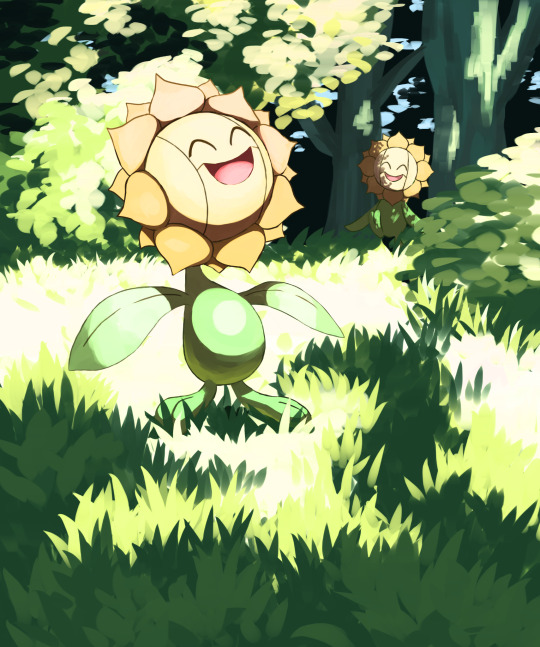
(Art by Jira (ziraiya 26)
Monocot is group name for plant like pokemon. This doesn't include all grass types, as some pokemon are grass types for their plant-like abilities. The monocot family only includes Pokemon, which are plants, or most of their bodies have extremely similar qualities of plants. So pokemon like Bulbasaur aren't in this family because the seed is planted on them by their mothers right after they're hatched and doesn't come naturally.
Appletun (just Appletun, not Applin or Flapple) were thought to be Monocots for a while. But they don't fuse with the apple that protected them when they evolve as a lot of people thought. The lower part of the apple is digested into their body through evolution, while the upper part is still used as protection for their soft head. Their body just resemble and apple enough, but not enough to be classified as a Monocot.
An important fact to know: Mushrooms are in their own family known as Agaricaceae, and are more related to mammals than they are plants! Because of this, Pokemon like Shiiinotic and Foongus have confused researchers for a long time. They are obviously grass types, and have similarities to plants, but have more similarities to mushrooms. It could've been that these pokemon evolved from ancient plants similar to mushrooms, but that's just a theory as of now. Because of this, they aren't on the list of Monocot Pokemon
Members of the Monocot family are:
Oddish/Gloom/Vileplume/Bellosom
Sunkern/Sunflora
Cacnea/Cacturne
Cherubi/Cherrim
Petelil/Liligant
Fomantis/Lurantis
Bounsweet/Steenee/Tsareena
Smoliv/Dolliv/Arbolvia
Carnivine
Gossifluer/Eldegoss
Bellsprout/Weepinbell/Victreebell
Hoppip/Skiploom/Jumpluff
Exeggcute/Exegutor
Budew/Roselia/Roserade
Maractus
Phantump/Trevenant
Capsakid/Scovillain
Pumpkaboo/Gorgeist
Bramblin/Brambleghast
I'll put the fact posts on Monocot pokemon as I make them, but I'm also going to put Appletun here, because I've talked about it a lot.
#monocot pokemon#monocots#pkmn genuses#quill pokefacts#pokemon genus#pokemon#im not tagging all of these pokemon#grass types#grass type pokemon#pokemon irl#irl pokemon#pokemon biologist#pokemon biology#pokemon zoology#pokeblog#pokeblogging#pokeblr#rotomblr#rotumblr#pkmn irl#irl pkmn#pokemon roleplay
38 notes
·
View notes
Text
So I'm playing Pokémon Uranium, despite it being out for years I've never actually beaten it and I wanted to change that so here I am
But the point of this post being... NUPIN MY BELOVED... I LOVE MY LITTLE AMOEBA DOG...

[ID: An image of Nupin, a fan made Pokémon from the fangame Pokémon Uranium. It looks like a slug with six stubby legs, though only four are visible due to its angle. Its main body is yellow, with its back and the top of its head being lime green; its back has a patch that is striped dark green and yellow. On its head is a U shape that is dark green with yellow tips. It has one large, green eye with three eyelashes and no other facial features. In black text above it is written "#88 Nupin". End ID.]
LOOK AT IT! IT'S BABY!
#original post#I LOVE THEM.#mine is named chaos (after a genus of unicellular organisms including the giant amoeba)#i will protect them with my life#pokemon#pokémon#fakemon#fakémon#pokemon uranium#pokémon uranium#nupin
13 notes
·
View notes
Text
i entirely lost the plot while planning a response to a question and ended up on a sidetrack about the most recent common ancestor of the fox pokemon (genus Vulpes). Vulpes are the true foxes, though some other pokemon (like eevee) are colloquially called foxes they aren't as closely related to these guys. this tree is based on what we know from genetic evidence of the surviving members of the genus!
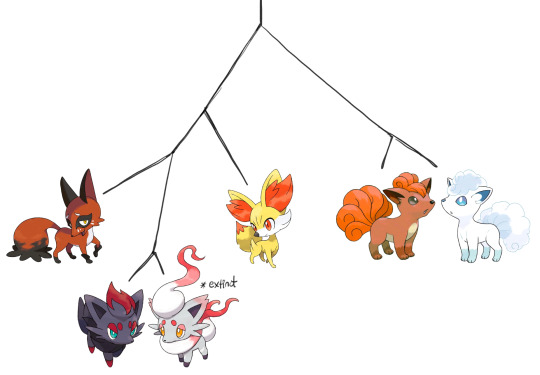

this little guy is Vulpes cinus, the earliest-known fox pokemon we've found, from 8 or so million years ago. it's only known from skeletal remains and we don't have enough material to revive it like some other fossil pokemon, so this reconstruction is entirely hypothetical! we do know that it was most likely a fire type based on its bones, though.
#pkmn#art#vulpix#nickit#zorua#fennekin#unreality#it doesnt have a proper common name (like 'zorua' or 'fennekin') so you get the scientific moniker.#a friend suggested calling it kitdarra which i like so much
4K notes
·
View notes
Text
Wet Beast Wednesday: platypus
Since I've been designing original Pokemon for a hypothetical Australia-based region I've been doing some research on Australian fauna and one of them (which I made into a starter) is the famous platypus. Join me and we will learn why these animals are so weird I don't blame the European naturalists who thought they were hoaxes until presented with a live specimen. I mean you can blame European scientists of the time for a lot of things, but doubting the platypus isn't one of them.
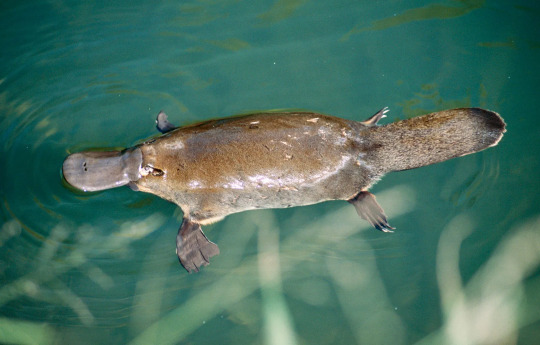
(image: a platypus at the surface of the water, seen from above. It is a brown, furry mammal. Its legs are very short, with long webbed tows. Its tail is broad, flat, and furry. It has a large duck-like bill at the front)
The first preserved Platypus specimens brought to Europe were thought to be hoaxes made by taxidermists attaching parts of different animals together, like the Fiji mermaid or jackalopes. Its pretty clear why they thought this as platypi (there's not definitive plural of platypus and platypi is the one I refer) look like real-life chimeras. A mole-like body (indeed, they were originally thought by naturalists to be species of mole) with a duck's bill, otter's feet, and beaver's tail. In fact, platypi are none of the above but are instead one of five surviving species of monotremes, the smallest and most basal lineage of extant mammals alongside the marsupials and placentals. Monotremes possess many traits distinct from other mammals and taxonomists currently believe that the monotreme lineage split off from the lineage of live-birth giving mammals prior to marsupials and placentals diverging from each other. Differences that monotremes have from all other mammals include a lower body temperature, lack of external ears, different jaw and inner ear structures, a cloaca (combination of the excretory and reproductive tracts into a single hole), more reptile-like embryo development, and the fact that they lay eggs instead of giving live birth. Many of these traits (especially the cloaca and laying eggs) are believed to be holdovers from pre-mammalian ancestors and thus monotremes are highly valued by scientists studying mammal evolution.
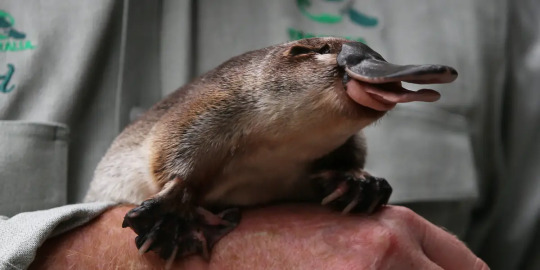
(image: a platyus standing on a person's hand. It is around the same size as the hand. It is seen from the front, with its head turned to the right. Its mouth is slightly open)
Platypi are semi-aquatic animals found in rivers and streams along eastern Australia and Tasmania. They are the only living members of their genus and family, though fossil relatives have been found. Their size varies based on habitat and ranges from 0.7 to 2.4 kg (1.6 to 5.3 lbs). Males average 50 cm (20 in) and females average 43 cm (17 in). Platypi are covered in fur that traps a layer of air to insulate them while swimming. The fur is bioflourescent, producing a blue-green glow when exposed to ultraviolet light. The tail is used to store fat and will glow larger in a well-fed individual. All four feet are webbed, the front feet more so. The style of swimming used by platypi is unlike that of any other amphibious or aquatic mammal. Other mammals use their hind feet and/or tails for propulsion. Platypi instead use their front feed for propulsion. The hind feet and tail are only used for steering. When on land, platypi curl up their front toes and walk on their knuckles to protect the webbing between their toes. The eyes are small and weak and are not used when hunting.

(image: a platypus seen from above and below, fluorescing under black light. Its top looks dark blue with splotches of purple while the underside is a lighter green-blue with purple towards the middle)
The bill is the most important organ for finding prey. All living monotremes are capable of electroreception, the detection of electric fields. These fields are produced when prey contracts its muscles and the platypus is sensitive enough to detect very small prey. The electroreceptor organs are located on the bill and run in lines from front to back. The distribution of the organs in distinct lines allows the platypus to determine the direction of the source of an electric field by sensing which line feels the field most strongly. The bill is also covered uniformly in mechanoreceptors used for touch. Platypi hunt by digging their bills through the sediment at the bottom of the water and detecting prey. This method of hunting and use of electroreception allows platypi to hunt in very murky water. Prey consists primarily of worms, insect larvae, and crustaceans. Platypi are born with teeth in their bills, but they fall out quickly and are not replaced. Some fossil species apparently retained their teeth into adulthood. The insides of the bill are lined with ceratodontes, plates covered in rough, keratinized surfaces that are used to grind up food.

(image: a platypus foraging for food at the bottom of a river. The front of its bill is poking into the sandy river bottom. There is a submerged log in the background and multiple small fish in the foreground)

(image: a scientific diagram showing three drawings of a platypus from three angles and the area it can detect electric fields. source)
As if all that wasn't strange enough, platypi are also one of the few species of venomous mammals. The male platypus has spurs on the hind feet that inject venom. This venom is powerful enough to kill dogs, but is not fatal to humans. Instead, it causes swelling and increases sensitivity to pain. This can last for weeks to months and can be agonizing. Female platypi are born with the spurs, but they never develop venom and fall off by their first birthday. Males use their spurs to fight over territory and mates.

(image: a person showing off a male platypus's spur. The platypus is mostly out of frame, but a hind leg and some fur is visible, wrapped in a sheet. A human hand is gripping the hind leg near the toes and holding it in place. The spur is curved and conical and larger than any of the actual claws. It is located near the heel)
Platypi live in simple burrows dug along the water's edge around 30 cm above the surface of the water. They are often hidden behind roots or plants. Platypi spend most of their time in the burrow sleeping for up to 14 hours a day. When not sleeping, they spend most of theer time in the water hunting. Dives last up to 30 seconds with a 10-20 second surface interval. Platypi will travel up to 7 km (4.3 miles) from their burrows to hunt. They maintain territories and will attempt to chase competitors of the same sex out. Males have larger territories than females and their territories usually overlap with those of 3 or 4 females. Platypi are nocturnal and crepuscular (active at dawn and dusk) but have been known to come out on cloudy days. They are typically active for 12 hours per day and spend most of that time hunting. A platypus eats up to 20% of its body weight daily. Platypi are preyed upon by snakes, goannas (monitor lizards), various birds of prey, and possibly crocodiles and invasive foxes.
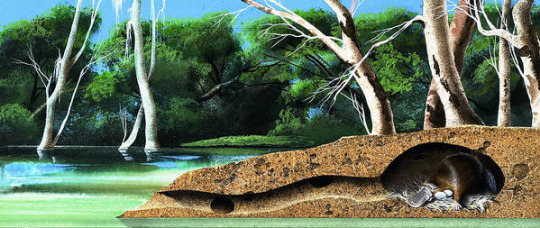
(image: a drawing of a cross-section of a platypus burrow. The burrow is located in a river bank with the opening right by the water. A long tunnel leads to a round chamber. In the chamber is a platypus with two eggs. Art by David Nockels)
Platypus mating season lasts between June and October every year. During this time, males will compete with each other for mates using their venomous spurs. Some males will maintain territories and force other males out while other males are more transitory and will go looking for mates. Females only mate with a single male every season. Strangely, females have two ovaries but only the left one is functional. After mating, the female will retreat to her burrow. While most egg-laying animals will lay they eggs as soon s they are formed, platypi retain their eggs internally for 28 days before laying them, after which they will continue to develop for 10 days before hatching. Most layings result in 2 eggs. The female curls around her eggs to incubate and protect them. Newborn platypi are called puggles and they are blind, hairless, and defenseless. As with other mammals, they feed on their mother's milk. Platypi do not have nipples and instead, the milk is secreted through the skin and into grooves on the mother's belly, where the puggles lap it up. While the puggles are developing, the mother spends less time out foraging, though she will increase the time foraging as her offspring develop. Weaning happes at 3-4 months, after which the juveniles will leave the burrow and set out on their own. Mothers have been observed laving behind soil plugs at the entrance to their burrows while there are offspring are in them. They are used to squeeze off water as the female returns to her burrow, preventing cold water from reaching the offspring.
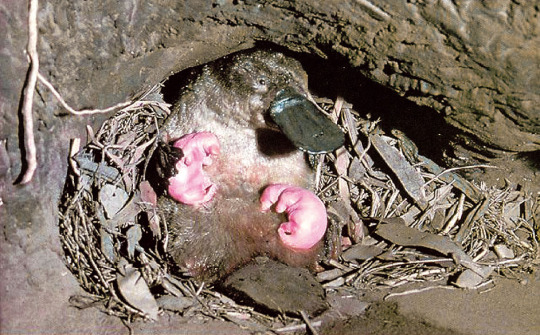
(image: a reconstruction of a mother platypus and puggles. They are in a dirt burrow lined with bits of leaves and bark. The mother is on its back and looking toward the camera. There are three puggles, which share the same body plan, but are very small and entirely pink. Tey are sitting on the mother's abdomen)
Platybi are classified as near threatened by the IUCN, though some argeu they should be reclassified as endangered. Their habitat range has decreased since European colonization of Australia and they are threatened by habitat loss, dams, pollution, and bycatch. Aboriginal Australians historically hunted them for food and Europeans also hunted them for fur, which was outlawed in 1912. The platypus was and is culturally relevant to Aboriginal peoples sharing its range, particularly the native peoples of the Murray river. There are multiple Dreamtime stories of the platypus, many dedicated to explaining how it ended up the way it is. In one, originating from the upper Darling river, a female duck named Daroo or was either seduced or kidnapped by a male water rat named Biggoon or Bilargun. After escaping, she laid two eggs that hatched into the first platypi, inheriting their mother's bill and webbed feet and father's body and fur. Another story from the same region says that the land animals, water animals, and birds all wanted the platypus to join their group and tried to convince it to join. The platypus decided that it didn't need to join any of the groups to be special, but still wanted to be friends with all of them and so took on traits from all groups.

(image: the Ironbarks Platypus, an Aboriginal Australian rock carving of a figure typically interpreted as a platypus. It is very simple, with a roughly rectangular shape with one rounded end. From one end is a simple loop usually interpreted as the platypus's bill. Four stick-like linbs emerge from the sides)
#wet beast wednesday#platypus#freshwater ecology#freshwater biology#biology#zoology#ecology#aquatic mammal#venomous mammal#amphibious mammal#monotreme#australia#animal facts
79 notes
·
View notes
Text
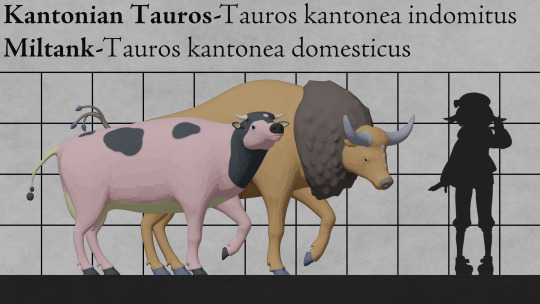
Kantonian Tauros and Miltank - a large herbivores from Kanto. Despite their different appearances, they're genetically almost the same, the only difference is that Miltank has undergone a process of domestication, while Tauros remain as wild animal, at least in most regions. Tauros live and travel in large herds with one leader. They are used in races in Alola, this is possible because Tauros populations in this region are much more peaceful. The complete opposite is the situation in Galar where they're extremely aggressive. Kantonian Tauros have close relatives in Paldea, so close that they're too included in genus Tauros, they all are know as "The Wild Bulls of Paldea".

The process of domestication of Miltank by humans began many thousands of years ago, in ancient times. Now they can produce so much milk that if they are not milked every day, they can get sick. The milk they produce is called "Moomoo Milk".
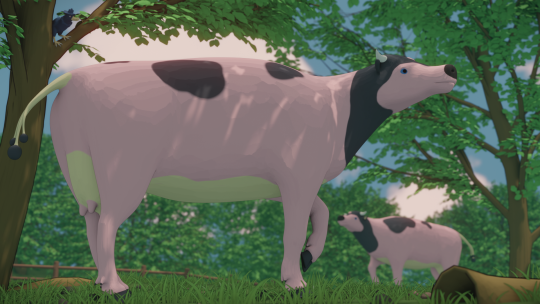
Phylogenetic tree of bovid Pokemons
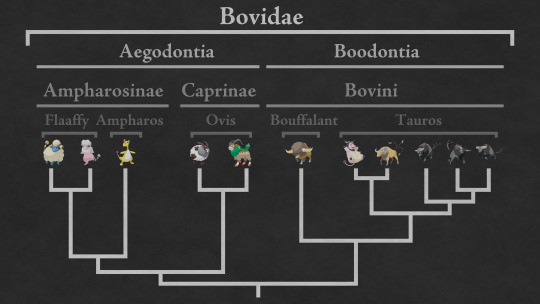
90 notes
·
View notes
Text
Bloody Bug, Bomb Bee

Surprise! Alya Cesaire will be the bee holder in Bloody Bug! Kinda gives me Wonder Woman vibes and I love it.
Oh, and her name comes from Bombus, the genus for bumblebees, and bee because saying 'bomb bee' makes me think of ribombee from Pokemon, and just yes.
#miraculous#miraculous ladybug#miraculoustalesofladybugandcatnoir#miraculous au#au#alternate universe#fanart#miraculous fanart#design#digital art#alya#alya cesaire#mlb alya#miraculous alya#alya miraculous#bloody bug au#kwami swap#bee miraculous#bee kwami#mlb design
38 notes
·
View notes